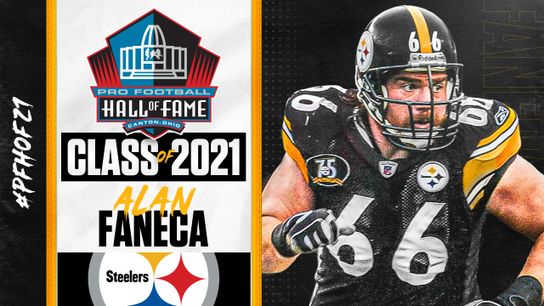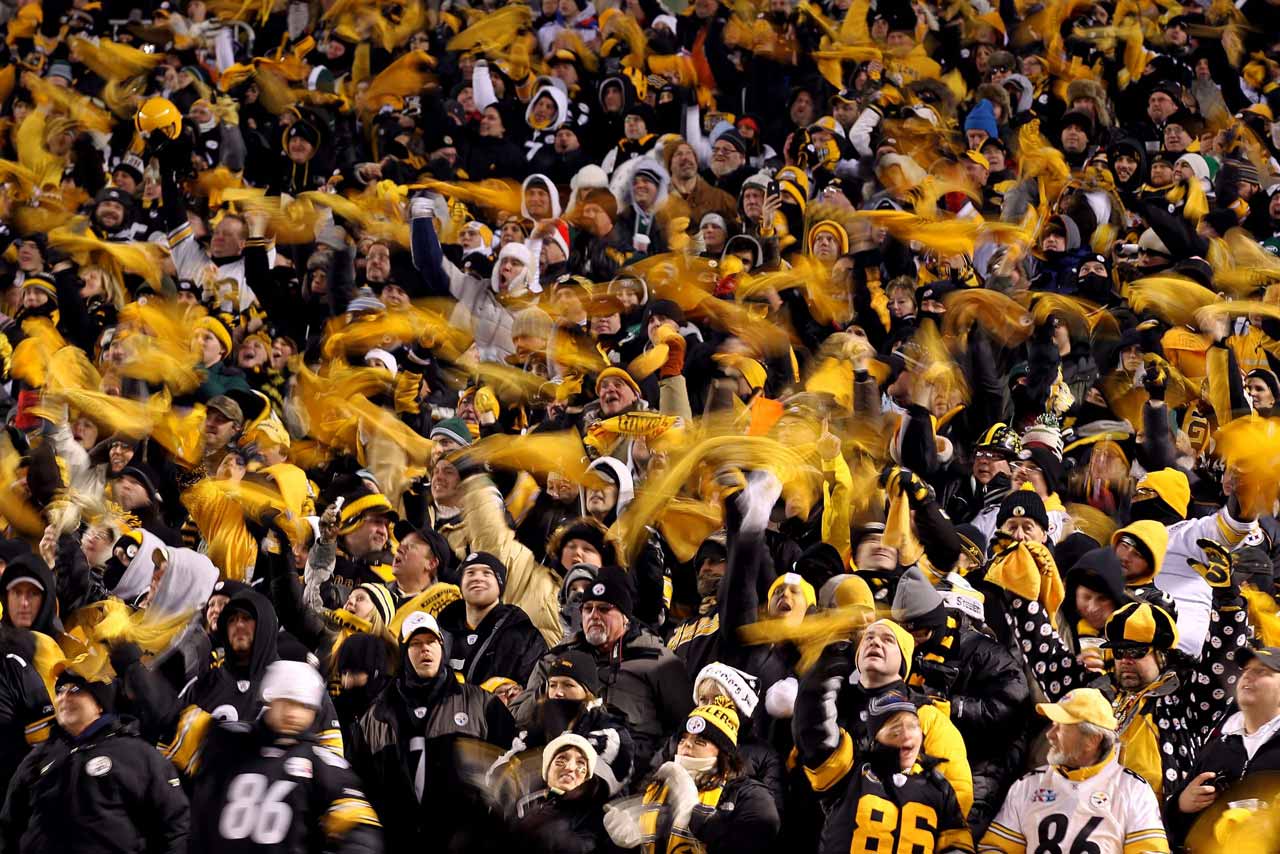In 1998, the Pittsburgh Steelers season crashed the team down to earth. Bill Cowher tied an NFL record by reaching the playoffs in each of his first six seasons and seemed poised to advance again with a 7-5 start. But all the momentum stopped with a game on Thanksgiving Day vs. the Detroit Lions that will forever live in Steeler Nation infamy. Referee Phil Luckett blundered the Jerome Bettis coin flip call and awarded the Lions the ball in OT. The gaffe began a skid of losing five straight to finish the season. It was particularly painful considering how close the Steelers were to advancing to the Super Bowl in 1997.
Bill Cowher – per Heart and Steel:
"That 1997 team might have been the best team we had in my fifteen seasons in Pittsburgh."
In retrospect, the departures of multiple coaches for promotions and players to free agency combined with some disappointing front office decisions revealed that the Steelers needed to start over. It kicked off an internal rivalry between Cowher and Tom Donahoe, but they co-existed enough prior to the season that the team began the rebuild by using the 26th overall pick to draft the new cornerstone of the Steelers offensive line: Alan Faneca.
Faneca Dominated from beginning to end
Faneca was the top guard selected in the 1998 NFL Draft and his snap count increased each week through the season’s first four games. After a Week 5 bye week, he supplanted Roger Duffy as the starter at LG and from that point would miss only two starts over the remainder of a 206-game career (one of which was a coach’s decision to rest players before the playoffs). In his first start, the Steelers accumulated 257 rushing yards and Faneca helped pave the way for Bettis to rush for 1,185 yards en route to being named to the All-Rookie Team and winning the Joe Greene Award as the team’s top rookie.
By 2001, Faneca had become the preeminent guard in the NFL and unquestioned leader of the Steelers offensive line as he was named to the first of his nine consecutive Pro Bowls. Faneca also earned First-Team All-Pro to begin a stretch where he was named First-Team (6) or Second-Team All-Pro eight consecutive years. He was named to the NFL 2000s All-Decade Team and would be the driving force on the offensive line that won Super Bowl XL.
[incontent2]
A Mauler and a Marvel
In 2001, Faneca anchored an offensive line that led to the Steelers finishing 3rd in offense, second only to the #1 finish of the 1979 Steelers. The Steelers finished top 10 in rushing in 9 of his 10 seasons. But perhaps no stat or award can top that Faneca was penalized for holding only 4 times in his entire career and only twice in his tenure with the Steelers.
Recognized by Teammates, Coaches and Opponents
Faneca’s abilities were never unappreciated by his teammates nor failed to impress his coaches. Bettis attributed much of the success he attained later in his career to Faneca’s blocking.
Jerome Bettis, per Teresa Varley of Steelers.com (Feb 6, 2021):
"Alan was critical to my career because whenever we went into a situation where we had an offensive lineman move Alan was always the guy to trap. He would run the counters or the powers or the traps. He had such versatility as a guard that we could move him. With his athleticism and agility, we were able to move in and create the holes on the opposite side of the line.He was a stud on the left side of the line. He gave us the ability to be strong running to the left, or if we wanted to pull linemen, he was the one pulling because of his athleticism.
His ability to play that position, dominate at that position, but be athletic enough to move around and travel from the standpoint of pulling as an offensive lineman was rare.”
Former Steelers guard and RT alongside Faneca was Kendall Simmons, who credited Faneca on the SteelerNation.com Draft Coverage Special in helping him develop. He noted being so impressed that he even got caught watching Faneca instead of focusing on his own assignment!
Kendall Simmons – Ron Lippock Steelers Takeaways: Player Memories Through The Decades:
"Alan Faneca’s knowledge of the game and his physical approach is something I have always admired. I watched him closely and asked a lot of questions."
Faneca even won the respect of the arch-rival Baltimore Ravens and Hall of Fame LB Ray Lewis.
Ray Lewis – per Steelers.com:
“He was one of the guards that he controlled the tempo of the front seven. He was the leader in that group…You’re telling your defensive lineman, don’t let him climb up to me. He was so dominant in how he could combo block. When you can influence that much of the defensive line, you’re going to have problems on the backend.”
The Signature Play
Bill Cowher knew that Faneca was not just an integral part of the running game, but he “redefined the position.” It was never more evident than in Super Bowl XL, when Willie Parker broke free for a 75-yard TD, it was a block by Faneca at the point of attack that his block overshadowed the setting an NFL record for the longest TD run in Super Bowl history.
[incontent3]
A rough departure
By 2007, Faneca was extremely angry with the Steelers over his contract, which paid him $3.5M with a $1M roster bonus. This was probably triggered when his only "peer" at the position - Steve Hutchinson - received a very controversial $49M offer with a "poison pill" from the Minnesota Vikings while having the transition tag placed on him by the Seattle Seahawks in 2006. Not only did it blow the pay scale for the guard position out of proportion, the "poison pill" aspect (which came back to haunt the Vikings later) was banned by the NFL. But the damage was done and younger guards of lesser talent: Derrick Dockery, Eric Steinbach and Leonard Davis all received contracts in the $49M range in 2007.
Faneca was furious the Steelers would come close to offering the same amounts to him and he became very vocal. He asked for a trade and openly stated that 2007 would be his last with the team.
Alan Faneca, per Scott Brown in the Pittsburgh Tribune Review (May 12, 2007):
"I play by the rules, I do that, and the offer I get is pretty much a non-offer. What am I to think? What are the guys in this room to think? If they can do it to me and everybody else and let Joey (Porter) go and things like that, what does it say to the rest of the guys?"
In 2008, the New York Jets signed Faneca for $40M with a $15M guarantee. But two years later, even after consecutive Pro Bowls, the Jets tried to trade Faneca with no takers. The Jets ate an $8M cap hit and they cut him before the 2009 season. Faneca collected around $16M (less than 40%) of the deal. Not coincidentally, similar fates awaited the same guards who received the massive contracts that triggered Faneca’s fury to begin with.
It leaves one to wonder if Faneca was more reasonable, might he have collected the same amount over the next three seasons and earned two more rings?
At heart, Still a Steeler
Faneca had a long wait to get the call for the Hall of Fame, much longer than it should have been. More likely than anything, the oft-cited but very true “Steelers fatigue” was to blame. The Steelers have their own wing of the Hall of Fame, and it has led to an anti-Steelers bias among voters that even Dan Rooney recognized. As each year went by, Faneca waited as a finalist and only to receive the dreaded phone call to inform that he wasn’t selected. The call is so difficult for players to take that it’s been reported that many players even cry when they receive it. Faneca endured that disappointment for years until he received that “knock on the door” by Hall of Fame President David Baker to personally deliver the news, “Welcome to Canton.”
So, to Faneca, it was only fitting that he asked Hines Ward to be his Hall of Fame presenter. Ward was also part of the 1998 Draft as the two would form the foundation of a team in transition to a Championship team. In a decision reminiscent of Lynn Swann advocating for John Stallworth, Faneca chose Ward in the hopes that Ward’s inclusion will revive the Hall of Fame discussion for Ward.
Faneca has no doubt that Ward deserves to get in and that he will. He just wants it sooner than later. Can anything be more appropriate for one of the greatest blockers in NFL history to clear a hole for teammate to join his long overdue induction into the Hall of Fame?
Thoughts or comments? Leave one below.
#SteelerNation



